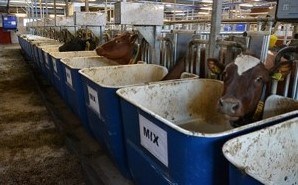Mastitis, an inflammation of the udder, is most commonly caused by infection, with Staphylococcus aureus being the most frequently isolated bacterium. Udder infections with S. aureus lead to reduced milk production and are known to cause chronic infections. Furthermore, mastitis increases workload for farmers, reduces milk quality, decreases the productive lifespan of dairy cows, and often results in premature culling. In Sweden, mastitis is the leading reason for antibiotic treatment in dairy cows. The inflammatory response in mastitis causes pain and reduces the well-being of affected animals. At the same time, the inflammatory reaction is a critical component of the immune defense against the pathogen. From an animal welfare perspective, it is important to detect and limit pain. Both farmers and veterinarians agree that severe mastitis is painful, but while studies suggest that cows experience pain even with mild or subclinical mastitis, opinions differ on the extent of pain in these conditions.
Sickness behaviour encompass physiological and behavioural changes observed during infection or inflammation. These include reduced appetite, decreased social activity, lethargy, and altered grooming patterns, offering valuable insights into animal health and disease progression. The planned experiment primarily involves the experimental inoculation of vaccinated and non-vaccinated animals with inactivated S. aureus to evaluate the protective effect of the test vaccine. Additionally, the study aims to investigate behavioural changes and pain-related behaviour exhibited by the animals in response to vaccination and exposure to S. aureus.
Contact Researcher
Josef Dahlberg, josef.dahlberg@slu.se, +4618671686
Other participants in the project
Niclas Högberg, niclas.hogberg@slu.se
